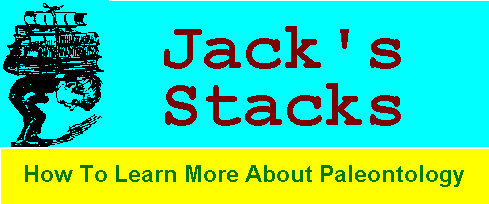
General Description of The Treatise on Invertebrate Paleontology

My subject for this month's edition is a book, if you can call it that, which can assist you in fossil identification. The "book" in question, the Treatise on Invertebrate Paleontology, is more correctly a collection of books, each concerning specific phyla of the invertebrates. Because of the amount of information available and the size of some groups, most phyla require multiple volumes for complete coverage. The complete set includes 33 individual books by my count.
These are available for use in the U.C. Geology Library as you might expect. The complete set or individual volumes may be ordered directly from the Geological Society of America; individual volume prices vary from $20.00 to $52.00 and they do take major credit cards. The GSA does not charge for shipping on orders over $25.00. The Cincinnati Museum of Natural History usually has a volume or two for sale as well. The Treatise can be found on the used book market too but some care should be taken here - some volumes have been recently revised and some prices may be higher than the new prices from the GSA.
I'm obviously not going to review each volume since I have only used a few. I will, however, point out some highlights.
Concerning use for identification, you should understand that the Treatise is intended to describe fossils to the generic level only. Once you get to that level, your next step is to seek out the individual published descriptions in the professional literature.
Also important to note is that the classifications and identifications are only as current as the publishing date. As an example: Part U, Echinodermata 3, published in 1966 includes the edrioasteroids; this volume was reprinted in 1986 without revision. The definitive and accepted reclassification of the edrioasteroidea appears in the doctoral thesis of Bruce Bell, A Study of North American Edrioasteroidea, published in 1976. Paleontology is like any other science in that once something is written, it is subject to immediate obsolescence.
Since this is a professional publication, you can expect to be faced with every technical term known to the science. Each volume begins with general information which describes the phylum and defines the terms you'll need in the systematic description sections. The definitions are understandable but the sheer volume of them can be bewildering. Each group has its own set of morphologic terms as well to further complicate things.
The general sections are well worth reading because they usually cover structural morphology (how the animal is constructed), paleoecology and ecology of living relatives, preservation, ontogeny (changes from birth through adult forms) and, phylogeny (evolutionary relationships).
One volume that won't help with identification but is well worth reading nonetheless is Part A, Introduction. The first 78 pages concerns taphonomy which includes death of the organism, burial, and fossilization. These three topics cover a lot of ground and this section gives one an appreciation of the analysis behind the conclusions drawn from the fossils; it may also make more obvious why important sites should be properly excavated by professionals to prevent loss of valuable data.
The remainder of Part A is a Period by Period description of worldwide biogeography and biostratigraphy. Each is written by a different author and consequently varies in content and detail. In general, each section discusses: fauna and faunal distribution; relations to continent position and paleoclimate; and major faunal changes. The Ordovician section did not include enough about the Cincinnatian to suit me; kind of picky I suppose, since this section was written by a European author.
Don't let the technical terms prevent you from using these important books. As I mentioned in my first column, challenging your mind with progressively more difficult material is the best way to learn and understand.